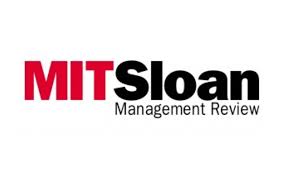
Weekly Business Insights from Top Ten Business Magazines
Extractive summaries and key takeaways from the articles curated from TOP TEN BUSINESS MAGAZINES to promote informed business decision-making | Since 2017 | Week 362 | August 16-22, 2024 | Archive

How to Turn Professional Services Into Products
By Mohanbir Sawhney | MIT Sloan Management Review | August 14, 2024
Extractive Summary of the Article | Listen
Product management is one of the fastest-growing roles in business, having gained increased scope and importance in Silicon Valley. While product managers used to be hired almost exclusively by technology companies, they are now being recruited in growing numbers by service-oriented businesses as well.
Recognizing the challenges of low margins and challenging scalability, turning services into products can be a lucrative pursuit, but it is fraught with operational and organizational challenges. Leaders of professional services firms must consider several difficult questions about whether their service offerings can and should be productized and for which customer segments, and how to transform a service-oriented business into a product-oriented one. Answering these questions will set up business leaders with a five-step productization road map.
- Assess the Product Potential. Every professional service involves a series of activities or tasks executed by the service provider in collaboration with the client. For each activity, the service provider should define two criteria: Frequency and Cognitive complexity. The more frequent the activity, the richer the data available to train algorithms that will automate the process and the greater the potential productivity improvement that can be realized by substituting human effort with automation. The more complex and mission-critical an activity is, the more difficult it is to automate and delegate to an algorithm.
- Decide the Optimal Productization Level. We can estimate the optimal productization level by assessing the level of engagement that customers want for various activities and factoring in the supply-side potential assessed earlier.
- Define the Offering Portfolio. Customers’ preferences for human engagement could vary from “do it for me” high-touch option, a “do it with me” medium-touch option, or a “do it myself” low-touch option. The more diverse the customers are in their preference for touch, the more differentiated the offering portfolio will need to be.
- Build the Product Capabilities. Productization of services requires three capabilities: Domain expertise to understand process workflows. Proprietary data to train AI algorithms. Technology platforms for automating processes and harnessing AI/generative AI.
- Lead the Transformation. Turning services into products involves a difficult business transformation. To lead the transformation, business leaders must be aware of the challenges and should proactively adopt strategies and tactics to overcome them. The dominant culture and mindset of professional services firms can be one major roadblock to transformation. To develop new product management capabilities and a new team. The final challenge is the redesign of the business model.
3 key takeaways from the article
- Product management is one of the fastest-growing roles in business, having gained increased scope and importance in Silicon Valley. While product managers used to be hired almost exclusively by technology companies, they are now being recruited in growing numbers by service-oriented businesses as well.
- Turning services into products can be a lucrative pursuit, but it is fraught with operational and organizational challenges.
- Leaders of professional services firms must consider answer the following questions that can help business leaders to set up a five-step productization road map. Assess the product potential. To what extent can the service be productized? Decide the optimal productization level. To what extent should the service be productized? Define the offering portfolio. What product-service mix should be offered to different customer segments? Build the product capabilities. What are the enablers of productization, and how can these be leveraged to drive the productization process? Lead the transformation. How should the productized organization be designed, and how can the barriers to change be overcome?
(Copyright lies with the publisher)
Topics: Strategy, Business Model, Services, Productization
